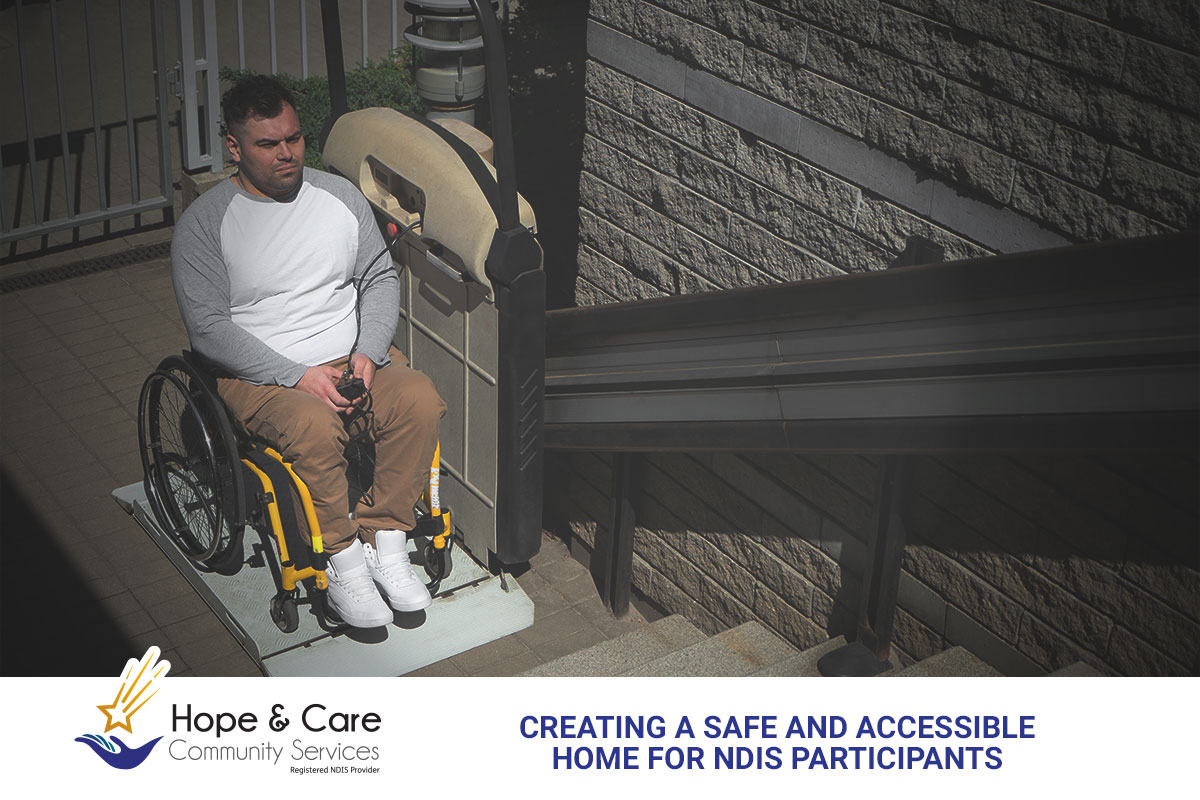
A safe and accessible home is essential for enhancing the quality of life for people with disabilities. For NDIS participants, a well-designed environment can empower individuals to live with greater independence, improving not only their physical well-being but also their emotional and mental health. This guide explores ways to create an accessible, hazard-free home, ensuring comfort, safety, and autonomy.
Why Home Safety and Accessibility Matter for NDIS Participants
For NDIS participants, home should be a place of security and freedom. Without proper modifications, it can become a source of difficulty and risk. Creating a home that accommodates a participant’s specific needs can significantly reduce the risk of accidents and enable them to perform daily tasks with greater ease. By focusing on both safety and accessibility, a home can become a supportive space where participants can live independently and confidently.
Entryways and Exits: Ensuring Easy and Safe Access
One of the first steps to creating an accessible home is ensuring that entry and exit points are easy to navigate. Here are some key modifications to consider:
- Install ramps or lifts: Stairs can be challenging for wheelchair users or individuals with limited mobility. Ramps or vertical lifts can provide smoother access.
- Widen doorways: Many doorways are too narrow for wheelchairs or mobility aids. Widening them to at least 32 inches (around 80 cm) ensures easier access.
- Level thresholds: Raised thresholds at doorways can pose a tripping hazard. Installing level or flush thresholds eliminates this risk.
- Automatic doors: Consider automatic door openers to allow participants to enter and exit their home without assistance.
Making Living Areas Accessible
Living spaces such as the lounge room, dining area, and kitchen need to be adapted for easy movement and usability. A few simple changes can make these areas more inclusive for people with disabilities.
- Lowered counters and workspace: In kitchens, lowering counters or providing adjustable-height workspace ensures wheelchair users can cook and perform other tasks independently.
- Open floor plans: Rearranging furniture to create wide, clear pathways is crucial for allowing mobility devices to move freely.
- Accessible lighting and switches: Light switches and electrical outlets should be positioned within easy reach, or automated systems, like voice-activated lights, can be used to enhance accessibility.
Bathroom Safety and Accessibility
Bathrooms pose some of the greatest risks for people with disabilities, making it crucial to address potential hazards in this area. Ensuring that bathrooms are accessible and safe can significantly improve quality of life.
- Install grab bars: Placing grab bars near the toilet and inside the shower or bathtub helps with balance and prevents falls.
- Roll-in showers: A roll-in shower eliminates the need for steps or a raised lip, making it wheelchair-accessible. Pairing this with a handheld showerhead and a shower bench makes bathing easier.
- Non-slip surfaces: Use non-slip flooring in the bathroom to reduce the likelihood of slips, which are more common in wet environments.
- Accessible toilets and sinks: Sinks and toilets should be adjusted to appropriate heights to accommodate mobility devices. Adding an elevated toilet seat can make transfers easier.
Bedroom Accessibility and Safety
The bedroom should be designed for comfort and ease of movement. Making simple adjustments here can greatly enhance a participant’s independence and ensure a restful, safe environment.
- Adjustable beds: A bed that can be raised or lowered enables easier transfers for individuals with mobility challenges.
- Closet accessibility: Lower closet rods and shelving so that clothing and personal items are within easy reach.
- Emergency response systems: Install an emergency call system near the bed, allowing participants to easily reach out for help in case of an accident during the night.
General Home Safety Tips
While specific rooms may require targeted modifications, there are general safety measures that can be applied throughout the home.
- Fire safety: Use smoke detectors that include visual alerts or vibrating alarms for participants with hearing impairments. Ensure fire extinguishers are easily accessible.
- Lighting: Well-lit spaces, especially hallways and stairways, help reduce the risk of falls. Motion-sensor lights can also provide extra convenience.
- Clutter-free floors: Keeping floors clear of obstacles and using slip-resistant flooring can help reduce tripping hazards.
- Smart home technology: Devices such as voice-activated assistants can control household functions like lights, temperature, and entertainment, offering more autonomy to NDIS participants.
Conclusion: Creating a Safe and Accessible Environment
By making thoughtful modifications to the home, we can help NDIS participants live more independently and safely. Whether it’s through widening doorways, installing ramps, or making bathrooms more accessible, creating a supportive home environment is a vital part of ensuring comfort and well-being.
Hope & Care Community Services is here to assist NDIS participants in their journey toward independence. From providing guidance on home modifications to offering a range of supportive services, we’re committed to helping individuals live their best lives in a space that meets their needs.
Finally, as Registered Provider, we understand the intricacies of the navigating services on your own. Unlock the full potential of your funding and provide the guidance you need to reach your goals. Feel free to Contact Us to explore how we can assist you on your journey. For instance, the NDIS is there to make a positive difference in your life, and we’re here to help!.
Want to learn more? Read other articles :
- Redefine Independence your own way – with HCCS
- Who’s Who: The Key Terms of Your NDIS Plan
- Foundational Supports: Building Blocks of NDIS Success
HCCS is a registered NDIS provider. Learn more about our services.
♥ We are available in Brisbane! – Our team is just a call away!
